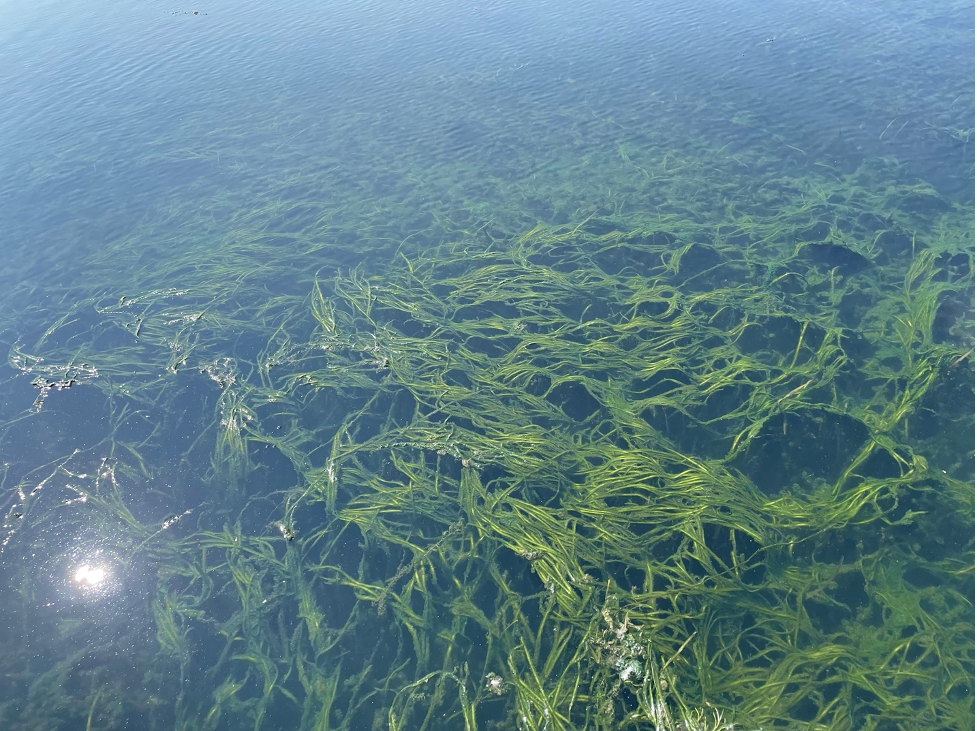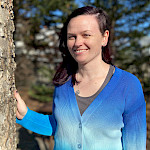Planning a Conference in Unprecedented Times
Annie Carew ·It’s difficult to describe the feeling of finally experiencing something you’ve been anticipating for nearly three years. Anticipating, planning, postponing, and anticipating again—all during “unprecedented times.” In early 2020, we here at IAN made the difficult decision to postpone the World Seagrass Conference and International Seagrass Biology Workshop (WSC/ISBW14) until 2022. When we finally arrived at the conference in downtown Annapolis at the beginning of August, it was immediately clear that waiting was the right decision. We were able to meet in-person, assembling a vibrant collection of scientists from around the world to discuss the restoration and resilience of seagrasses. It was entirely worth the wait.
For those familiar with the Chesapeake Bay region, underwater grasses are a major topic of conservation conversations. These tidal and non-tidal plant species are vital to the Chesapeake Bay ecosystem as habitat and food sources for fishes, crabs, plankton, and birds. The WSC/ISBW14 meeting covered both marine and salt-tolerant freshwater species, such as eelgrass, and they will be collectively referred to as submerged aquatic vegetation (SAV) here.

A bed of SAV at Susquehanna Flats, Maryland. Photo courtesy of IAN staff.
I came to this conference from two perspectives: as a professional science communicator on the planning committee, focused on talk agendas and field trip safety; and as a young seagrass scientist, excited to meet other “seagrassers” and talk about restoration planting.
Part I: Communicating Science Effectively
As an IAN science communicator, I help other scientists plan and execute presentations and graphics. Giving academic talks is a daunting prospect for many people. I myself have anxiety about public speaking, but I have found that preparing my talk well in advance and practicing it several times ensures that things will go well even if I’m nervous.
At this conference, I was deeply impressed with the overall quality of the talks. I saw speakers use compelling visuals like maps, diagrams, and gifs to make their presentations more interesting for an audience that’s been sitting in a conference room all day. Many talks featured IAN symbols to illustrate the importance of seagrasses in their ecosystems. We love seeing people use our symbols; that’s what they’re for, and we’ve worked hard to design them!
Both IAN symbols and principles were omnipresent at WSC/ISBW14. IAN staff Bill Dennison and Nathan Miller led a workshop on science communication, which emphasized science visualization and concise data communication. The next day, Heath Kelsey, Katie May Laumann, and I led a workshop about stakeholder engagement. I was fascinated by the conversations I heard from scientists around the world working to effectively engage local communities in seagrass monitoring projects. We discussed the best ways to ensure diverse and equitable engagement, which enables us as scientists to capture the full picture of what’s happening in an ecosystem. Conservation is increasingly focused on the interactions between humanity and nature; diversity, equity, inclusion, and justice (DEIJ) and environmental justice are a key piece of those interactions.

IAN staff onsite organized conference presentations and handled last-minute complications. Photo courtesy of IAN staff.
Part II: Facilitating SAV recovery
The theme of this conference was “Signs of Success: Reversing the Course of Degradation.” SAV habitats around the world have been threatened in recent decades by warming temperatures and pollution. Targeted efforts in monitoring and planting, however, have been successful; the Chesapeake Bay is a prime example of restoration efforts, which is why our location perfectly corresponded with our theme.
I studied SAV restoration for my Master’s thesis project at UMCES. Since my graduation, I haven’t thought much about SAV, but it holds a very special place in my heart. My week at ISBW14 showed me that I am still fully capable of geeking out over restoration planting methods and drone footage of sea turtle foraging patterns. It was, in a word, awesome.
A special thank-you to IAN staff
For the first time in several years, the entire IAN staff came together to work on a single event. Katie May Laumann, Annie Carew, and Ann Foo were on the WSC/ISBW planning committee and designed all of the documents and posters for the event; João Paulo Coimbra and Lili Badri were onsite all week to help with registration and organization; Lorena Villanueva, Alex Fries, Heath Kelsey, Vanessa Vargas-Nguyen, Joe Edgerton, Nathan Miller, Sky Swanson, and Sidney Anderson all volunteered part of their week to help us. Bill Dennison gave opening and closing remarks. Everyone’s efforts came together to make a wonderful conference, and I’m so grateful to have been a part of it.
About the author
Annie Carew

Annie Carew graduated from UMCES with a Master's degree in 2019. Her thesis research examined the effects of genetic identity on aquatic plant restoration success. Annie's research interests include coastal management and climate adaptation. At IAN she works on workshop facilitation, data visualization, document design, data analysis, and social media management. She is an enthuiastic birder and botanist, and can often be found wandering in the woods on the weekends.